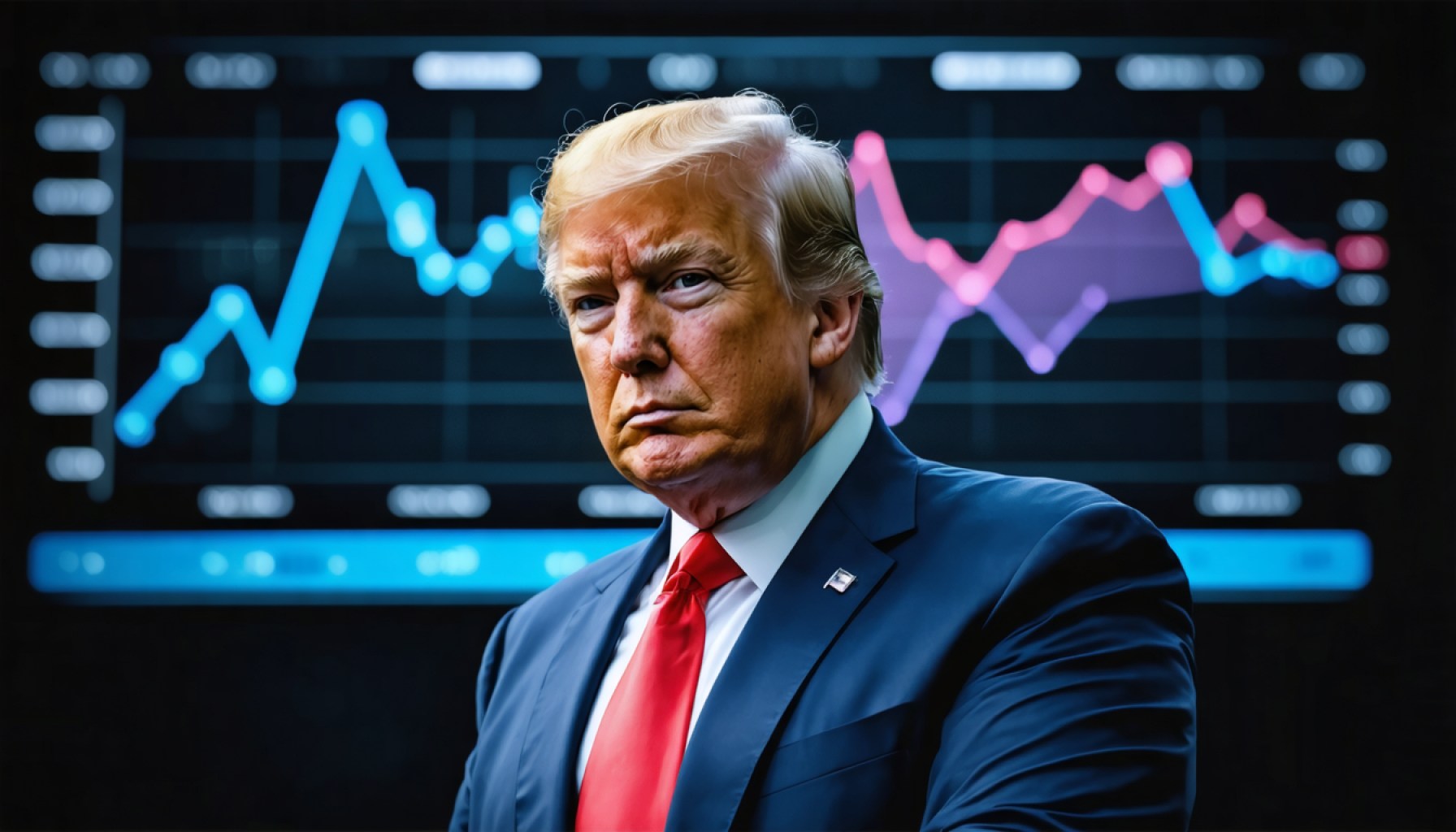- Donald Trump’s bold economic actions stir debate, with opposing views on Wall Street and Main Street.
- A viral video portrays Trump as strategically manipulating the stock market for American benefits despite potential chaos.
- The video suggests Trump aims to reduce interest rates by funneling liquidity into U.S. treasuries, benefiting the middle class.
- Tariffs are framed as a tool to boost domestic production, impacting elite wealth while favoring everyday Americans.
- Nevertheless, the reality includes inflation risks from high import duties, affecting consumer goods and international trade relations.
- The strategy raises questions about strategy versus risk, highlighting the global economy’s interconnected and fragile nature.
- The narrative underscores the complexity of modern economics, where strategic decisions have global implications.
Emerging from the White House with characteristic bravado, Donald Trump embarks on an audacious economic experiment, one that stirs debate across both Wall Street and Main Street. Amidst the whirlpool of trade tensions and tariffs, a widely circulated online video—a beguiling piece combining both reality and conjecture—paints the President as a grandmaster, manipulating economic levers in an unexpected chess match.
The narrative weaves a tale of deliberate chaos: with Trump purportedly orchestrating a stock market plunge only to unleash a cascade of benefits for everyday Americans. As the S&P 500 stumbles, an avatar of satirical wit claims the crash is no blunder but a strategic gambit. It suggests this self-imposed calamity is designed to drive liquidity into U.S. treasuries, compelling the Federal Reserve toward interest rate cuts. The game? A financial two-step where reduced rates enable the refinancing of colossal national debt on the cheap.
Playing to a distinctly American audience, it suggests a temporary hit to the elite—a strategic depletion of wealth for the few, to benefit the many. This video postulates that by nudging domestic production through retaliatory tariffs, Trump orchestrates an economy where eggs are cheaper, forces favor the farmer, and perhaps, just perhaps, the middle class finds reprieve in a landscape traditionally skewed.
Meanwhile, the economic reality languishes in a more complicated spectrum. Key imports attract heavy duties, rattling international suppliers and raising the specter of an inflationary spiral on consumer goods. From boardrooms to factory floors, businesses are grappling with the repercussions of a newly uncertain trade horizon. Critics caution that while strategic in appearance, prolonged tension will sap economic vitality, risking a contraction that extends well beyond America’s borders.
As the world watches, Trump’s controversial maneuverings raise the ultimate question: is this deft strategy, or merely audacious brinksmanship? Peering through the fog of volatility, the verdict remains elusive. Yet, what emerges amidst the discourse is a potent reminder of the global economy’s interconnectedness, complex and fragile, where every move carries weighty implications. The takeaway is clear: in the intricate dance of modern economics, the balance of power and prosperity is tenuously poised, demanding both circumspection and clarity.
The Hidden Impact of Trump’s Economic Strategy: Is It Masterful or Misguided?
Understanding the Strategy Behind Trump’s Economic Maneuvers
Donald Trump’s economic strategies while in office were bold, seeking to transform the U.S. economic landscape through tariffs, trade tensions, and influencing monetary policy. But beyond the speculation of a strategic “chess match,” several facets of these policies warrant closer examination for their broader impacts.
Key Insights and Trends
– Trade Tensions and Tariffs: One of Trump’s hallmark strategies involved imposing tariffs on imports, particularly from China, to encourage domestic manufacturing. These tariffs were intended to make U.S.-produced goods more competitive. However, industries reliant on imported components faced higher production costs, potentially leading to increased prices for consumers.
– Interest Rates and National Debt: By creating scenarios where interest rates could potentially be reduced, the Trump administration sought to refinance national debt more cheaply. Yet, lower interest rates can also have complex effects, such as reducing returns on savings and investments.
– Domestic Production Push: While aimed at boosting domestic manufacturing and job creation, the push also risked escalating prices due to increased costs of raw materials, which were now subject to tariffs.
Pros and Cons Overview
Pros:
1. Encourages domestic production.
2. Aims to reduce trade deficits.
3. Potentially lowers costs for national debt refinancing.
Cons:
1. Risk of inflation as import costs rise.
2. Complicates international trade relationships.
3. Prolonged trade tensions could slow global economic growth.
How to Navigate This Economic Terrain
– For Consumers: Stay informed about rising prices and consider adjusting spending habits, focusing on local products which might now be more price-competitive.
– For Businesses: Evaluate supply chains and explore domestic suppliers to mitigate the impact of tariffs.
– For Investors: Monitor interest rate changes and stock market reactions to trade policy announcements to make informed investment decisions.
Controversies and Limitations
Critics argue that these economic policies risk creating a ripple effect of uncertainty across global economies. The potential short-term gains might be overshadowed by long-term global trade volatility and diplomatic strains. Could this brinkmanship lead to a self-inflicted recession, or will it ultimately recalibrate trade balances favorably?
Market Forecasts
The global market remains cautiously optimistic but wary. As tariffs continue to play a pivotal role, industries such as electronics and automobiles could face volatility. Analysts predict that if trade tensions ease, there will be significant opportunities for economic growth.
Actionable Recommendations
– Stay Diversified: Whether in business or personal investments, a diversified approach can help manage risk.
– Focus on Innovation: In an unpredictable economic environment, emphasizing innovation and value-addition can create new growth opportunities.
– Keep Abreast of Policy Changes: Policy shifts can occur rapidly; staying informed is crucial for timely responses.
For further updates and insights about the evolving economic climate, consider visiting sources such as Bloomberg or The Wall Street Journal.
Trump’s economic strategies may be seen as bold and even audacious, but every move has deep-rooted implications that extend beyond immediate optics. The balance of benefits and drawbacks will continue to be the subject of critical analysis as the full impact of these strategies unfolds over time.
